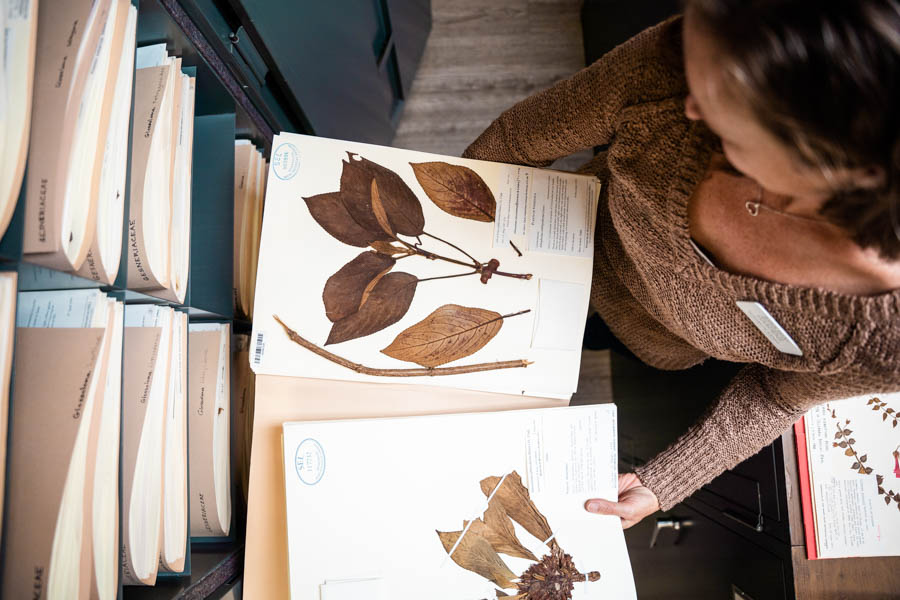You don’t have to be a botanist, taxonomist or conservationist to appreciate the Herbarium at Marie Selby Botanical Gardens, but it certainly helps with plant pronunciation. Inside this Sarasota trove of flora, each tongue-twisting species has its own unique majesty. “Our Herbarium is modest but mighty,” says Greg Luberecki, the Vice President for Strategic Communications at Selby Gardens. “Even at 117,000 specimens, it’s relatively small in size compared with some herbaria around the world (which may contain several million specimens), but it is world-renowned for its collection of epiphytic (air) plants.”
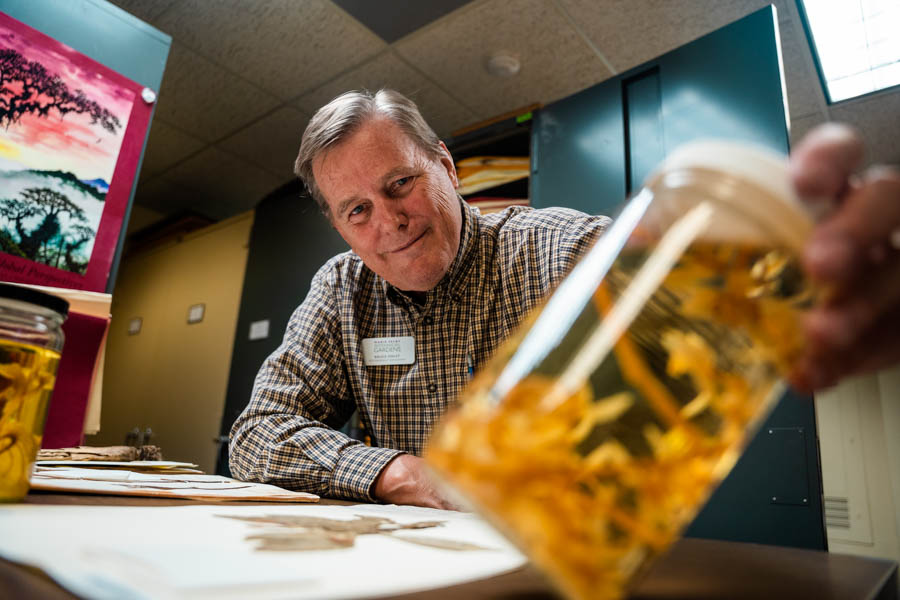
VICE PRESIDENT FOR BOTANY BRUCE HOLST WITH AN ORCHID SPECIMEN FROM THE SPIRIT COLLECTION. THIS GESNERIAD SPECIMEN COLLECTED IN PERU WAS IDENTIFIED AS SEEMANNIA SYLVATICA.
And it is always evolving. As Selby Gardens continues to grow (an impressive, long-term master plan is in the works), the 1974-created Herbarium is blooming right along with it. For those who may not know, an herbarium is technically a collection of preserved plant specimens and other plant data that is used for scientific study. It is a library, of sorts, used by taxonomists for plant identification and classification, and it provides base-level knowledge that is critical to conservation and the biological sciences. While it may take a specialized eye to distinguish between the classifications and items inside the Herbarium, it only takes a love of nature and beauty to marvel at it. The specimens are carefully arranged in a way that is both educational and accessible to the public. “The specimens in the Herbarium are dried, pressed and mounted on paper for filing. They follow a format of including specific information, such as a description, where it was found, who found and who confirmed it,” Luberecki says. “And a lot of volunteer work goes into helping to preserve, mount and document the specimens. According to Selby Gardens botanist Elizabeth Gandy, every hour in the field collecting requires about eight hours back in the office, properly curating the collection.”
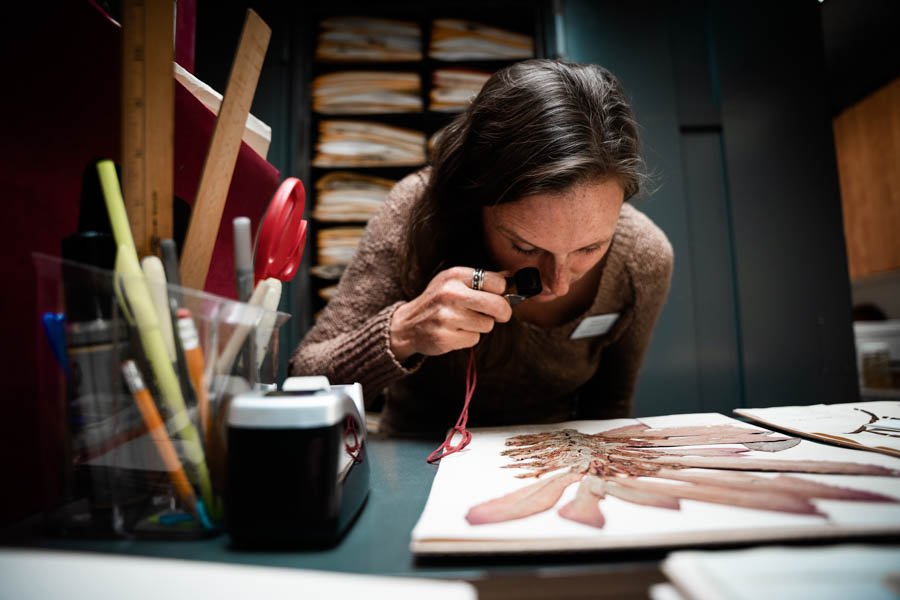
CURATORIAL ASSISTANT ELIZABETH GANDY EXAMINES A GESNERIAD SPECIMEN IN THE SELBY GARDENS HERBARIUM
For botanical collectors and curators, this is an absolute passion project. Selby Gardens is the only botanical garden in the world that is dedicated to the display and study of epiphytic orchids, bromeliads, gesneriads and ferns, and other tropical plants. The organization was founded in 1973 and is now comprised of a 15-acre downtown Sarasota campus and a second campus (opened in 2020) at Historic Spanish Point. Together, both locales encompass 45 acres of space. But scientists from Selby Gardens don’t just stay in one place. They have ventured into some of the earth’s wildest regions—from the tropics to the subtropics—to identify, study and gather rare plants. Within the Herbarium alone are 40,000 Orchidaceae (orchids); nearly 13,000 Bromeliaceae (bromeliads); and 9,400 Gesneriaceae (gesneriad flowering plants). There are 6,500 collections just from the state of Florida. Approximately 2,000 specimens are added to the Herbarium annually, with most of the plants collected by Selby Gardens’ staff members on their far-reaching expeditions. “These specimens are often—though not always—the result of traveling to remote places, and discovering and documenting things that haven’t been described for science before,” Luberecki says.
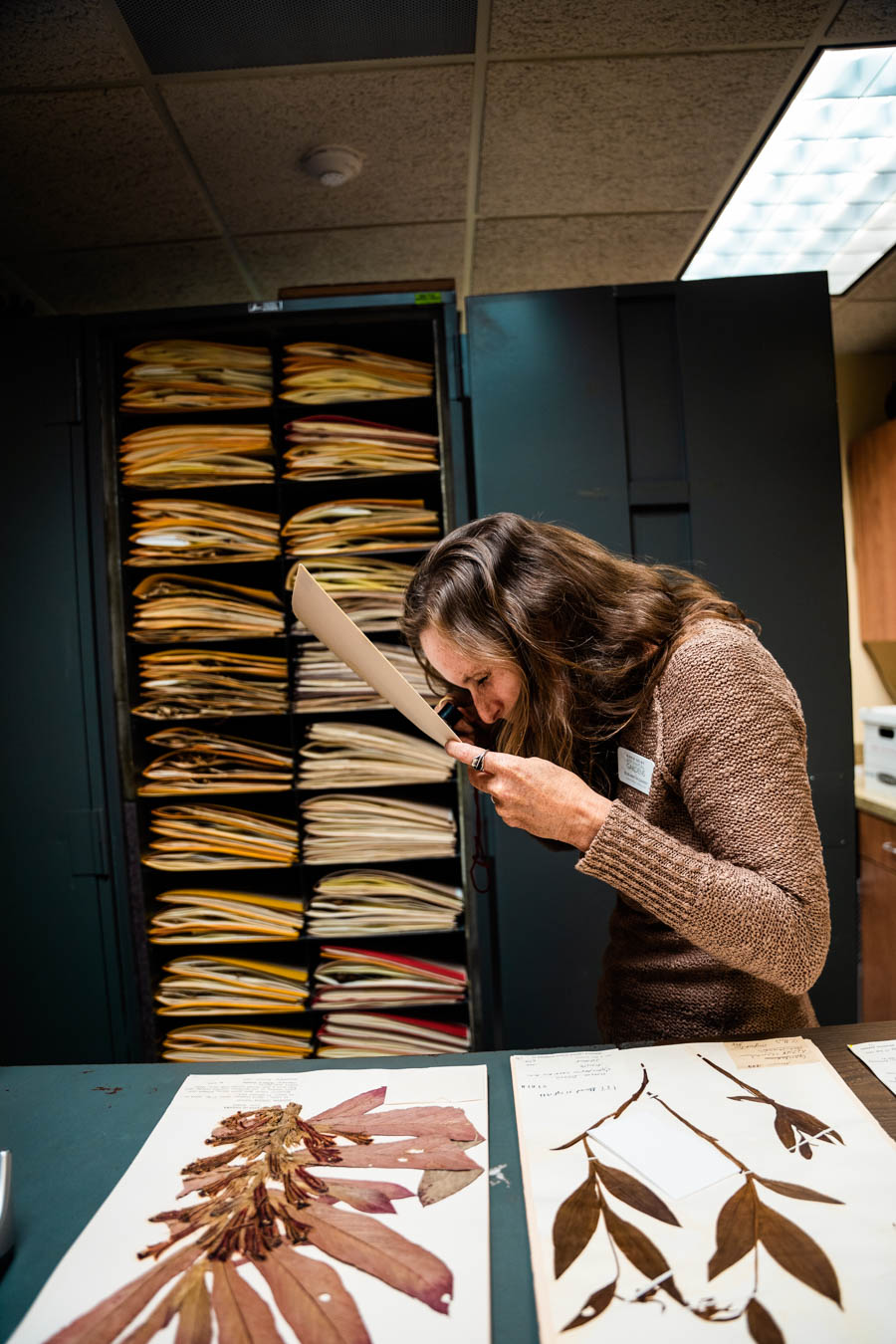
Among the current finds in the Herbarium are some historically significant specimens, like the #000001 specimen (the first-ever accessioned species, which is a terrestrial orchid from Spain collected by Selby Gardens co-founder and world-renowned botanist, Dr. Carlyle Luer). Other collections maintained by Selby Gardens’ botany team are the spirit collection (specimens suspended in liquid for preservation, which number in the tens of thousands), the carpological collection (dried specimens that retain their three-dimensionality), and the research library. The horticulture team tends to the living plant collection. “Even though the Herbarium can seem like a dry subject (literally), we stress the excitement of discovery that it represents,” Luberecki says. “Even specimens collected locally can be incredibly meaningful to science and conservation, as well as beautiful in their own right. It’s all about the excitement of discovery and literally documenting life on Earth, including the diversity and distribution of species.”
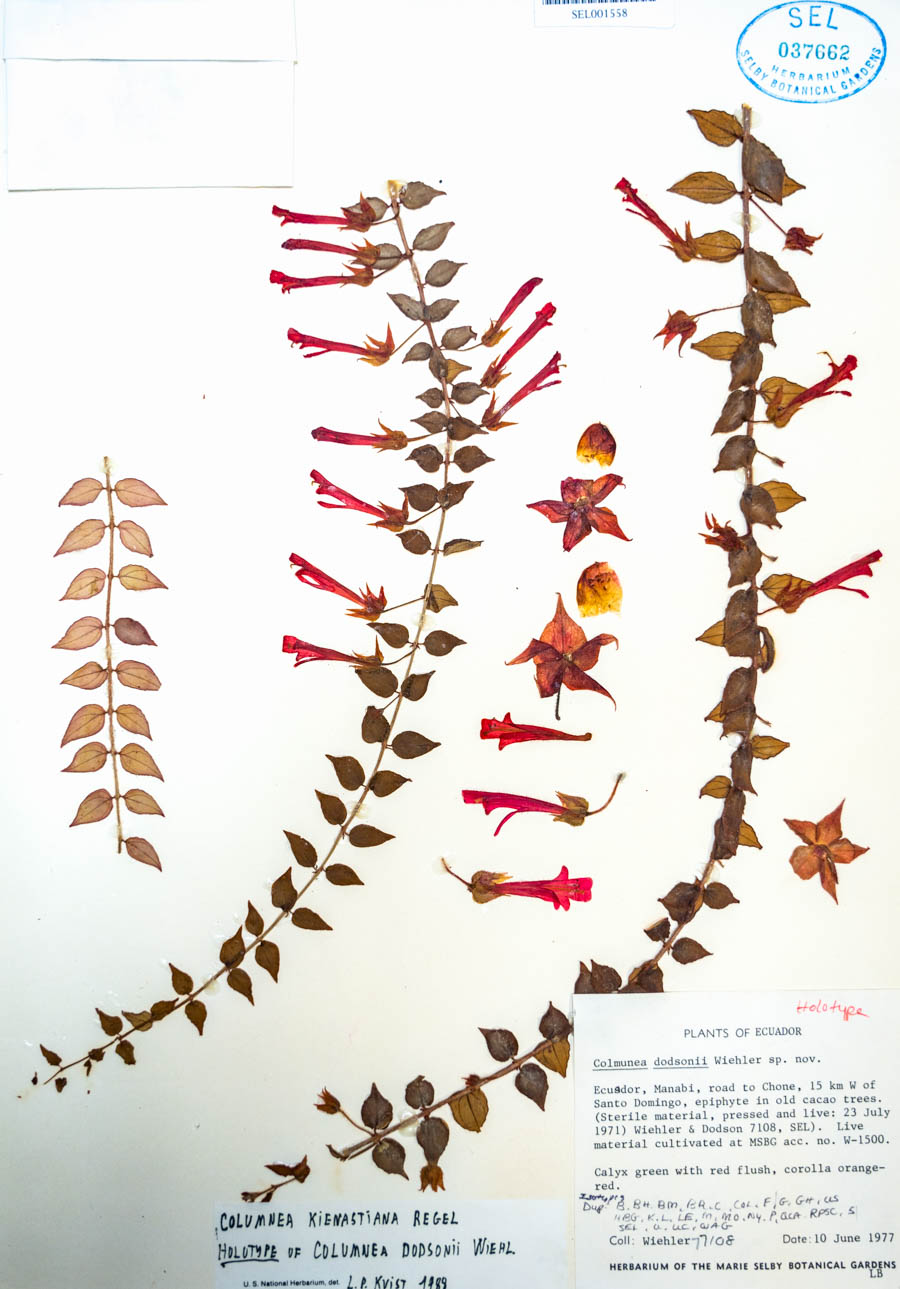
TO PRESERVE THEIR FORM, TEXTURE AND COLOR, PLANTS COLLECTED IN THE FIELD ARE CAREFULLY ARRANGED AND SPREAD FLAT BETWEEN THIN SHEETS (KNOWN AS FLIMSIES), THEN DRIED, USUALLY IN A PLANT PRESS, BETWEEN B
After Selby’s master site plan is realized (a 10-year process that is estimated to cost $67 million), the Herbarium and other facets of the facility will be featured even more prominently. Selby will offer representation and interpretation of the material in the collection in the Welcome Center, so visitors will be greeted by a wider array of specimens and information. There will be periodic tours of the research facility and greater access to the library of rare books. Selby Gardens is also collaborating with other herbaria worldwide to provide digital data and images from the collection to the scientific community. “For example, we are part of a National Science Foundation grant with 16 other institutions to digitize our collections. This collection and documentation is the first part of the scientific process,” Luberecki says. “In essence, Selby Gardens wants to share what we have with the entire world, and that involves both immediate (but safe) access for visitors, and digital access for everyone.”




